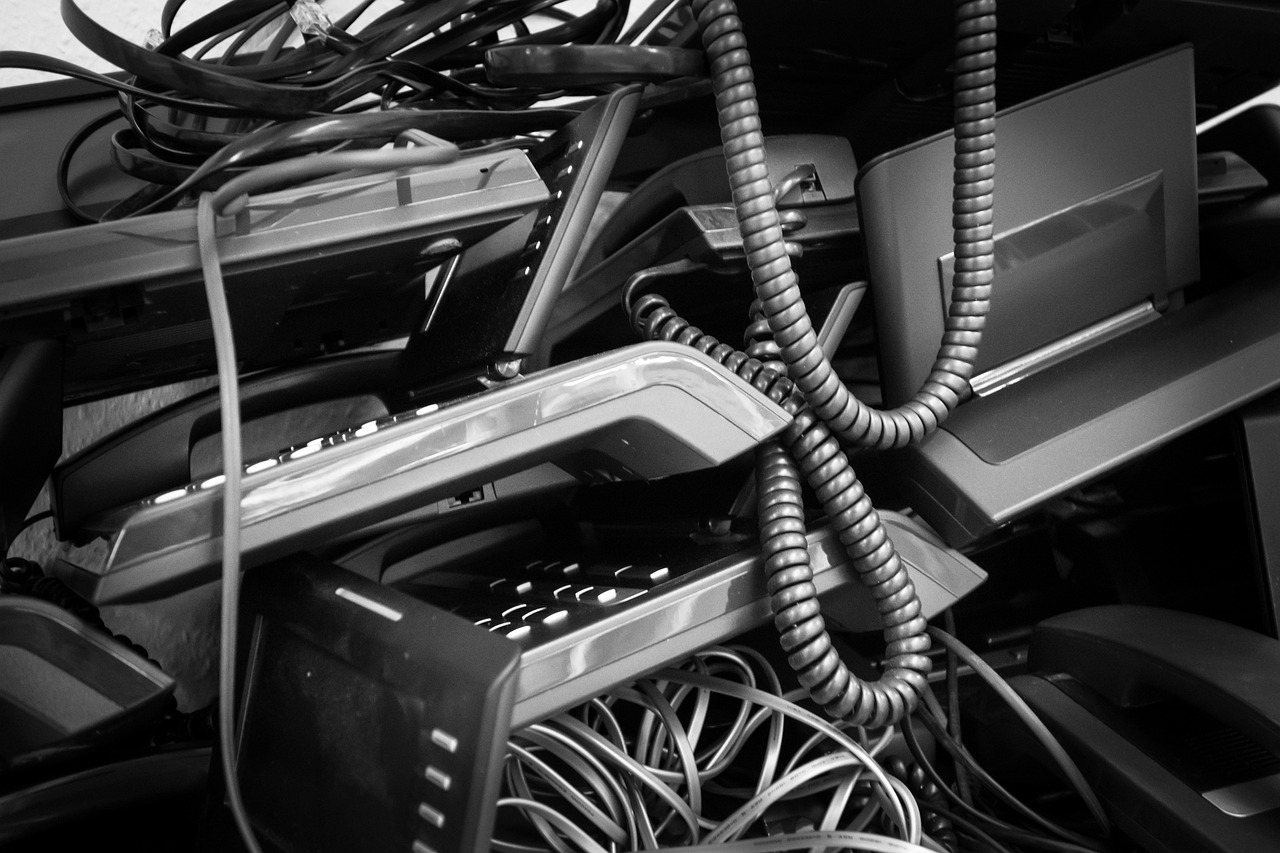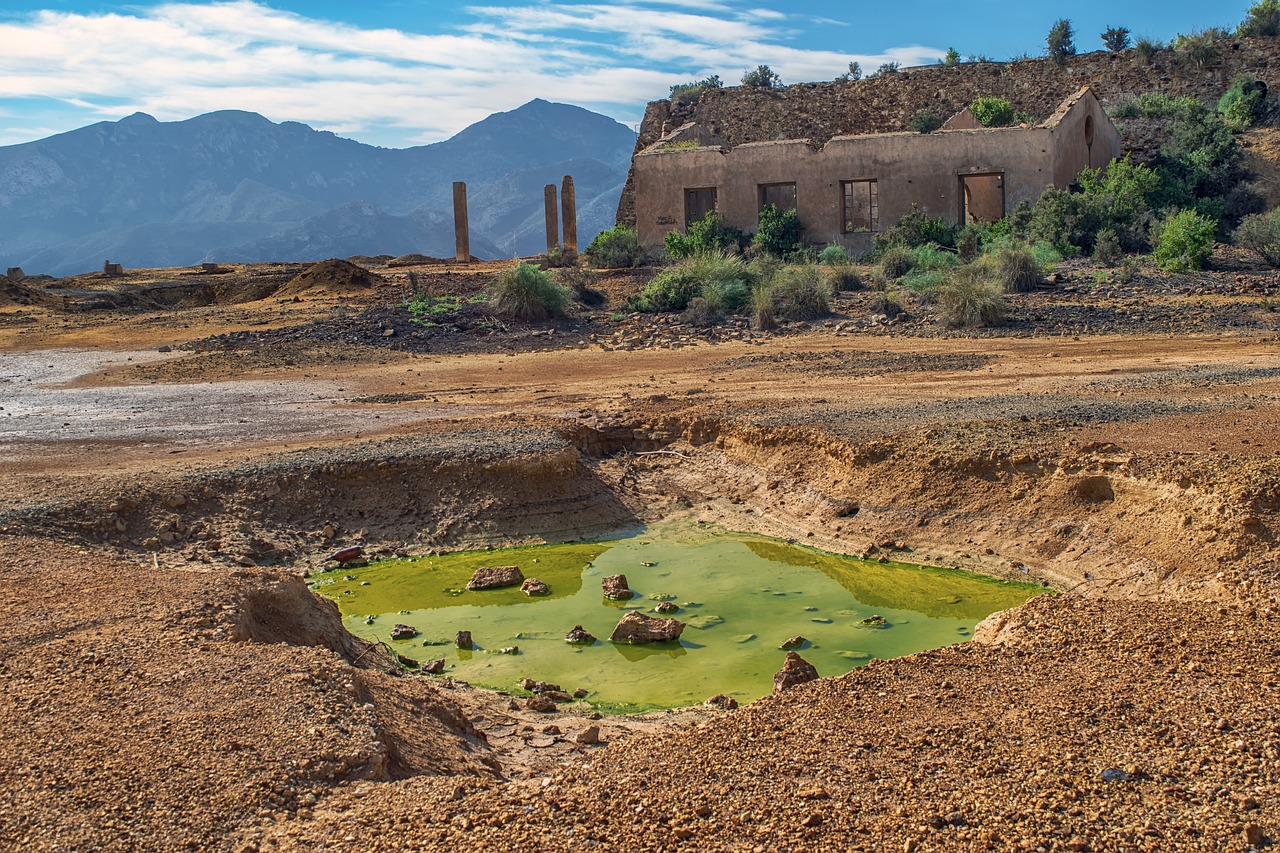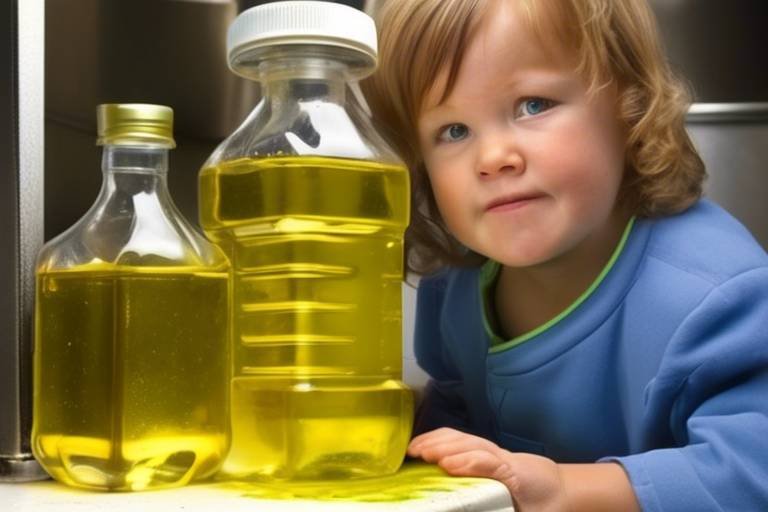The Pros and Cons of Incineration as a Waste Management Method
Incineration is a hot topic in the world of waste management, and for good reason! As we grapple with the ever-growing mountains of waste produced by our modern lifestyles, the question arises: is incineration a viable solution? This article dives into the advantages and disadvantages of incineration, shedding light on its environmental impact, efficiency, and what alternatives might exist.
At its core, incineration is a waste treatment process that involves burning waste materials at high temperatures, often exceeding 850 degrees Celsius. This method is designed to reduce the volume of waste significantly, turning it into ash, flue gas, and heat. The process not only helps manage waste but also plays a crucial role in modern waste management practices. Think of it as a fiery solution to our trash woes, but like any fiery solution, it comes with its risks and rewards. The mechanics of incineration involve advanced technology, including air pollution control systems that aim to capture harmful emissions before they enter the atmosphere. So, while incineration can be effective, it's essential to understand how it operates and its implications for our environment.
One of the most compelling arguments in favor of incineration is its potential to drastically reduce the volume of waste. By burning waste, incineration can decrease the amount of material that ends up in landfills, which is becoming increasingly scarce. This reduction in landfill use leads to less land being consumed for waste disposal, ultimately minimizing environmental degradation. Imagine if we could shrink our trash heaps down to a fraction of their original size—sounds appealing, right?
But wait, there’s more! Incineration doesn’t just dispose of waste; it can also generate energy. This process is known as energy recovery, and it’s one of the key advantages of incineration. By harnessing the heat produced during combustion, incineration facilities can convert waste into usable energy, contributing to renewable energy sources and reducing our reliance on fossil fuels. This is a win-win situation for both waste management and energy sustainability, allowing us to turn our trash into treasure!
One of the most exciting aspects of incineration is its ability to convert waste into electricity. Incineration facilities can utilize the heat generated from burning waste to produce steam, which in turn drives turbines to generate electricity. This dual benefit of waste management and energy production is a game-changer. Imagine a community powered by its waste—how cool is that?
In addition to generating electricity, incineration can also produce heat for district heating systems. This means that the heat generated from burning waste can be used to warm buildings and provide hot water to local communities. It’s like getting a cozy blanket from the very waste we produce! This process not only improves energy efficiency but also helps reduce the overall carbon footprint of a community.
However, it’s not all sunshine and rainbows. Despite its benefits, incineration raises significant concerns about emissions. The burning of waste can release various pollutants into the atmosphere, including dioxins, furans, and heavy metals, which can have detrimental effects on air quality and public health. It’s crucial to address these emission concerns through stringent regulations and advanced technology to ensure that the benefits of incineration do not come at the cost of our health and environment.
When evaluating incineration as a waste management method, the economic viability cannot be overlooked. Building and operating incineration facilities requires a substantial initial investment. However, these facilities can lead to long-term savings in waste management costs. By reducing the volume of waste and generating energy, incineration can offset some of the financial burdens associated with traditional waste disposal methods, such as landfilling. It’s a bit like spending money on a gym membership to save on healthcare costs later—initially painful but potentially beneficial in the long run!
While the upfront costs of incineration facilities can be daunting, they often lead to significant long-term savings. By diverting waste from landfills and generating energy, incineration can reduce the overall costs associated with waste management. It’s essential to analyze the financial implications of choosing incineration over more traditional methods, as the long-term benefits can outweigh the initial investment.
Another economic benefit of incineration is job creation. Incineration facilities can provide employment opportunities in various sectors, including construction, operation, and maintenance. This not only boosts local economies but also contributes to a skilled workforce in the field of waste management. It’s like planting seeds for economic growth while tackling the waste problem!
- What is incineration? Incineration is the process of burning waste materials at high temperatures to reduce their volume and generate energy.
- Is incineration environmentally friendly? While incineration reduces landfill use and can generate energy, it also raises concerns about emissions and air quality.
- Can incineration generate electricity? Yes, incineration facilities can convert waste into electricity through the heat produced during combustion.
- What are the economic benefits of incineration? Incineration can lead to long-term savings in waste management costs and create jobs in various sectors.

Understanding Incineration
This article explores the advantages and disadvantages of using incineration for waste management, highlighting its environmental impact, efficiency, and potential alternatives.
Incineration is a waste treatment process that involves burning waste materials at high temperatures, typically above 850 degrees Celsius. This method serves as a means to reduce the volume of waste significantly, transforming it into ash, flue gas, and heat. The process is not just about burning waste; it’s a complex interplay of chemical reactions that occurs in a controlled environment, ensuring that the maximum amount of energy is recovered while minimizing harmful emissions. Think of it as a high-tech furnace designed to tackle the ever-growing mountains of waste we produce daily.
In modern waste management practices, incineration plays a pivotal role, especially in urban areas where space is at a premium. With landfills filling up rapidly, incineration offers a viable alternative by converting waste into energy. This method allows municipalities to manage waste more sustainably, reducing reliance on landfills and decreasing the potential for soil and groundwater contamination. Imagine your garbage being transformed into energy rather than piling up in a landfill; that’s the magic of incineration!
During the incineration process, waste is fed into a combustion chamber where it is subjected to high temperatures. The primary components of this system include:
- Combustion Chamber: Where the waste is burned.
- Air Supply System: Ensures that enough oxygen is present for complete combustion.
- Heat Recovery System: Captures the heat generated during combustion to produce energy.
- Emission Control System: Filters out pollutants before the gases are released into the atmosphere.
The efficiency of incineration depends on various factors, including the composition of the waste and the technology used in the facility. Advanced incineration plants are equipped with sophisticated emission control technologies that significantly reduce the release of harmful substances, making them a more environmentally friendly option compared to older models. However, it’s crucial to note that not all waste is suitable for incineration. Materials such as metals, glass, and certain plastics can be recycled or reused, while organic waste can be composted. Thus, a careful assessment of waste types is necessary to optimize the incineration process.
In summary, understanding incineration involves recognizing its potential as a waste management solution that not only reduces the volume of waste but also generates energy. While it is not a one-size-fits-all solution, it certainly has its place in the broader context of sustainable waste management strategies.
1. What types of waste can be incinerated?
Most types of municipal solid waste can be incinerated, excluding recyclable materials like metals and glass, as well as hazardous waste that requires special handling.
2. How does incineration impact the environment?
While incineration reduces waste volume and generates energy, it can also produce emissions that may harm air quality if not properly managed. Advanced technologies are essential to minimize these impacts.
3. Is incineration cost-effective?
Incineration requires a significant initial investment, but it can lead to long-term savings by reducing landfill costs and generating energy, making it economically viable in the long run.
4. Can incineration facilities create jobs?
Yes, incineration facilities can create jobs in construction, operation, and maintenance, contributing positively to the local economy.

Environmental Benefits
When it comes to waste management, incineration often gets a bad rap. However, if we peel back the layers, we can see that it offers some significant that are worth discussing. First off, one of the most striking advantages of incineration is its ability to dramatically reduce the volume of waste. Imagine a mountain of garbage, towering over you; incineration can shrink that mountain into a mere hill. By burning waste at high temperatures, incineration can reduce the original volume of waste by up to 90%. This means less waste heading to landfills, which are already overflowing in many areas, leading to a decrease in land use and environmental degradation.
Moreover, with less waste in landfills, we also see a reduction in landfill gas emissions, which are notorious for contributing to climate change. Landfills release methane, a greenhouse gas that is far more potent than carbon dioxide. By opting for incineration, we can mitigate this issue, making it a more sustainable choice in the long run. Not to mention, incineration facilities are typically equipped with advanced technologies to filter out harmful pollutants, ensuring that the air quality remains intact.
Another environmental perk of incineration is the potential for energy recovery. When waste is burned, it doesn’t just vanish into thin air; it generates heat, which can be harnessed to produce energy. This energy can then be used to power homes, businesses, and even feed into the electrical grid, providing a dual benefit of waste management and energy production. In fact, many modern incineration facilities are designed to maximize this energy recovery, making them not just waste disposal sites but also crucial players in the renewable energy landscape.
Energy recovery from incineration can be compared to a double-edged sword. On one side, it helps reduce our reliance on fossil fuels, a significant win for the environment. On the flip side, it raises questions about the sustainability of continually producing waste for energy. However, when managed properly, this energy recovery can provide a consistent and renewable energy source. As communities look for ways to transition to greener energy solutions, incineration offers a viable option that aligns with these goals.
Incineration facilities can convert waste into electricity through a process known as waste-to-energy. This involves burning waste to produce steam, which drives turbines that generate electricity. The implications of this process are profound; not only does it help in managing waste effectively, but it also contributes to the energy grid, making communities less dependent on fossil fuels. Imagine powering your home with the waste you produce—this is a reality in many areas with advanced incineration systems.
In addition to generating electricity, incineration can produce heat for district heating systems. This is particularly beneficial for local communities, as it provides them with a sustainable source of heat for residential and commercial buildings. Think of it as a cozy blanket that keeps you warm during chilly winters, all while utilizing waste that would otherwise contribute to environmental issues. By tapping into this heat generation, communities can improve their energy efficiency and reduce their overall carbon footprint.
In conclusion, while incineration may not be the perfect solution to waste management, its environmental benefits are certainly noteworthy. From reducing landfill use and greenhouse gas emissions to providing renewable energy, incineration is a complex but potentially effective tool in our waste management arsenal. As we continue to explore sustainable waste management practices, it’s essential to weigh these benefits against the concerns, ensuring we make informed decisions for our planet’s future.

Energy Recovery
One of the most compelling aspects of incineration is its ability to facilitate . Imagine transforming waste, something often viewed as a burden, into a source of energy that can power homes and businesses. This dual functionality not only addresses waste management challenges but also contributes to the growing demand for renewable energy sources. The process of energy recovery through incineration involves burning waste materials at high temperatures, which generates heat. This heat can then be harnessed in several ways, significantly enhancing the overall efficiency of waste management systems.
When waste is incinerated, the heat produced can be utilized to generate electricity. In fact, many modern incineration facilities are equipped with combined heat and power (CHP) systems. These systems maximize energy output by converting waste into both electricity and heat. The electricity generated can be fed into the local grid, while the heat can be used for district heating systems, which distribute warm water to residential and commercial buildings. This not only reduces the reliance on fossil fuels but also promotes a more sustainable energy landscape.
Furthermore, energy recovery through incineration can significantly decrease the volume of waste that ends up in landfills. By converting waste into energy, we are essentially giving it a second life. This process can lead to a reduction in greenhouse gas emissions associated with landfill sites, where organic waste decomposes and produces methane, a potent greenhouse gas. Therefore, incineration with energy recovery not only helps in waste management but also plays a role in combating climate change.
To illustrate the impact of energy recovery through incineration, consider the following table that outlines the potential energy output from various types of waste materials:
| Type of Waste | Energy Content (MJ/kg) | Potential Energy Recovery (MWh/ton) |
|---|---|---|
| Municipal Solid Waste | 10-15 | 2.5-3.5 |
| Wood Waste | 15-20 | 3.5-4.5 |
| Food Waste | 5-10 | 1.5-2.5 |
As shown in the table, different types of waste have varying energy contents, which directly affects the potential energy recovery. For instance, municipal solid waste can yield between 2.5 to 3.5 MWh per ton, making it a valuable resource in the energy recovery process. This not only underscores the efficiency of incineration as a waste management method but also highlights its potential as a renewable energy source.
In conclusion, energy recovery through incineration is a vital component of modern waste management strategies. By converting waste into usable energy, we can reduce landfill dependency, lower greenhouse gas emissions, and contribute to a more sustainable future. As we continue to seek innovative solutions to waste management challenges, the role of incineration in energy recovery will undoubtedly grow in significance.

Conversion to Electricity
When we talk about incineration, one of the most fascinating aspects is its ability to convert waste into electricity. Imagine taking something that would otherwise end up in a landfill and turning it into energy that powers your home or community. This process not only helps in managing waste but also contributes to the energy grid, making it a win-win situation for both waste management and energy sustainability.
The process begins with the incineration of waste at extremely high temperatures, often exceeding 850 degrees Celsius. This intense heat breaks down the organic materials in the waste, releasing energy in the form of heat. This heat is then used to produce steam, which drives turbines connected to generators, ultimately converting that thermal energy into electricity. It’s like turning trash into treasure, isn’t it?
Here are some key points about the conversion of waste to electricity:
- Efficiency: Modern incineration plants are designed to maximize the efficiency of energy conversion, often achieving energy recovery rates of up to 25% of the energy content of the waste.
- Grid Contribution: The electricity generated can be fed directly into the local power grid, helping to reduce reliance on fossil fuels and contributing to a more sustainable energy mix.
- Reduced Landfill Dependency: By converting waste to electricity, we significantly decrease the amount of waste that would otherwise require landfill space, thus preserving land and reducing environmental impact.
Additionally, the conversion process is evolving with technology. Many facilities are now incorporating advanced systems that allow for the capture and utilization of excess heat generated during incineration. This excess heat can be used for district heating systems, providing even more energy efficiency and benefits to local communities.
However, it's essential to approach this technology with a balanced perspective. While the conversion of waste to electricity is a remarkable advancement in waste management, it also requires strict regulations and monitoring to ensure that emissions remain within safe limits. The challenge lies in maximizing the benefits while minimizing any negative environmental impacts.
In conclusion, the conversion of waste to electricity through incineration not only addresses the pressing issue of waste disposal but also opens up new avenues for energy production. As we continue to innovate and improve our waste management practices, this method could play a pivotal role in creating a more sustainable future.
- What types of waste can be incinerated? Most municipal solid waste can be incinerated, including organic materials, plastics, and paper. However, hazardous waste requires special handling.
- Does incineration produce harmful emissions? Yes, incineration can produce emissions, but modern facilities are equipped with advanced filtration systems to minimize pollutants.
- How does incineration compare to landfilling? Incineration reduces the volume of waste significantly and generates energy, while landfilling occupies space and can lead to environmental issues like leachate and methane emissions.
- Is incineration a renewable energy source? While incineration itself is not renewable, it can contribute to renewable energy goals by reducing reliance on fossil fuels and generating energy from waste.

Heat Generation
When we think about waste management, the first thing that often comes to mind is how to dispose of our trash responsibly. However, incineration takes this concept a step further by not only managing waste but also generating heat that can be harnessed for various purposes. Imagine turning your garbage into a source of warmth for your home or community! This process is not just a clever trick; it's a practical solution that helps improve energy efficiency in local systems.
Incineration facilities are equipped with advanced technology that can capture the heat produced during the burning of waste materials. This heat can be used in district heating systems, which supply hot water and heating to residential and commercial buildings. By utilizing this excess heat, communities can significantly reduce their reliance on fossil fuels, leading to a decrease in greenhouse gas emissions. It’s akin to finding a hidden treasure in your backyard—what was once seen as a burden (waste) is transformed into a valuable resource (heat).
To understand the impact of heat generation from incineration, consider the following benefits:
- Reduced Energy Costs: By using the heat generated from incineration, local governments and businesses can lower their energy bills, leading to significant savings over time.
- Improved Energy Efficiency: Utilizing waste heat means that less energy needs to be produced from traditional sources, which can be both costly and environmentally damaging.
- Community Benefits: Local residents can enjoy a reliable and sustainable source of heat, enhancing their quality of life, especially in colder climates.
Moreover, the integration of heat recovery systems in incineration plants can lead to a more sustainable approach to waste management. By capturing and reusing heat, these facilities can operate more efficiently, minimizing their environmental footprint while maximizing energy output. This dual-purpose functionality is a win-win for both waste management and energy production.
In summary, heat generation through incineration is an innovative approach that not only addresses waste disposal but also contributes to energy sustainability. As communities strive to become more eco-friendly, embracing technologies that convert waste into heat can play a crucial role in achieving those goals. So, the next time you think about waste, remember that it might just be the source of warmth for your community!
- What is incineration? Incineration is a waste treatment process that involves burning waste materials at high temperatures, reducing their volume and generating energy.
- How does heat generation from incineration work? Heat generated during the incineration process can be captured and used for district heating systems, providing warmth to homes and businesses.
- What are the environmental benefits of heat generation? Utilizing heat from incineration reduces reliance on fossil fuels, lowers greenhouse gas emissions, and improves overall energy efficiency.
- Can incineration be considered a sustainable waste management method? Yes, incineration can be sustainable when it includes heat recovery systems that maximize energy output while minimizing environmental impact.

Emission Concerns
When it comes to incineration, one of the most pressing issues that often comes to mind is emissions. While incineration offers several benefits, it also raises significant concerns regarding the pollutants released into the atmosphere during the burning process. These emissions can include a variety of harmful substances, which can have a detrimental impact on air quality and public health.
Firstly, let’s talk about the types of emissions that incineration can produce. During the combustion of waste, particularly if it contains plastics or other synthetic materials, a range of toxic compounds can be emitted. These include dioxins, furans, and heavy metals, which are known to be harmful to both human health and the environment. The incomplete combustion of waste can also lead to the release of particulate matter, which can exacerbate respiratory issues in vulnerable populations.
To put things into perspective, let’s consider a few key pollutants associated with incineration:
| Pollutant | Source | Health Impact |
|---|---|---|
| Dioxins | Burning of chlorine-containing materials | Endocrine disruption, reproductive issues |
| Heavy Metals | Metal-containing waste (batteries, electronics) | Neurological damage, developmental problems |
| Particulate Matter | Incomplete combustion | Respiratory diseases, cardiovascular issues |
It’s crucial to understand that modern incineration facilities are equipped with advanced technologies designed to minimize these emissions. For instance, scrubbers and filters can capture many harmful substances before they enter the atmosphere. However, the effectiveness of these technologies can vary, and not all facilities have the same level of compliance with environmental regulations.
Moreover, public perception plays a significant role in the acceptance of incineration as a waste management method. Many communities are understandably concerned about the potential health risks associated with living near incineration plants. This fear is often fueled by a lack of understanding of the technologies in place and the regulatory frameworks that govern these facilities. As such, it’s essential for operators to engage with the community, providing transparent information about emissions and the measures taken to ensure safety.
In conclusion, while incineration presents a viable solution for waste management, particularly in reducing landfill use, the concerns regarding emissions cannot be overlooked. Ongoing advancements in technology and stricter regulations are vital to mitigating these concerns. Ultimately, the challenge lies in balancing the benefits of waste-to-energy processes with the imperative of protecting public health and the environment.
- What are the main pollutants released during incineration? The primary pollutants include dioxins, heavy metals, and particulate matter.
- How can incineration facilities reduce emissions? Modern facilities use technologies such as scrubbers and filters to capture harmful emissions before they are released.
- Are there health risks associated with living near incineration plants? Yes, there can be health risks, particularly related to respiratory issues, but modern regulations aim to mitigate these risks.
- What is the role of community engagement in incineration projects? Community engagement is crucial for building trust and ensuring transparency regarding emissions and safety measures.

Economic Considerations
When it comes to waste management, one cannot overlook the that play a pivotal role in determining the most effective method. Incineration, while often viewed as a controversial option, brings with it a plethora of financial implications that can either make or break its viability as a waste management strategy. First off, let’s talk about the initial investment required to set up an incineration facility. These facilities demand a significant upfront cost, which can be daunting for municipalities or companies looking to invest in sustainable waste management solutions.
However, it’s essential to weigh this initial expenditure against the long-term savings that incineration can offer. For instance, while landfilling waste incurs ongoing costs—like land acquisition, maintenance, and the eventual need for landfill expansion—incineration can significantly reduce these expenses over time. By converting waste into energy, incineration not only diminishes the volume of waste but also generates revenue through energy production. This dual benefit can lead to a more sustainable financial model in the long run.
To give you a clearer picture, let’s break down some of the costs associated with incineration versus traditional landfill methods:
| Cost Factor | Incineration | Landfilling |
|---|---|---|
| Initial Setup Cost | High | Moderate |
| Operational Costs | Lower (due to energy generation) | Higher (land maintenance) |
| Land Use | Minimal | High |
| Revenue from Energy | Yes | No |
Moreover, the economic benefits of incineration extend beyond just direct savings. The establishment of incineration facilities can lead to job creation in various sectors. Not only are jobs created during the construction phase, but there are also opportunities in the operation and maintenance of these facilities. This can be particularly beneficial for local communities, providing stable employment and contributing to the local economy. In fact, studies have shown that for every job created in an incineration facility, multiple indirect jobs can sprout up in related industries.
In conclusion, while the initial investment for incineration facilities may seem steep, the potential for long-term savings, coupled with job creation and energy generation, paints a promising picture. It’s a bit like planting a tree; the initial effort and resources might be substantial, but once it takes root, the benefits can flourish for years to come. So, when evaluating waste management options, it’s crucial to look at the bigger picture and consider not just the immediate costs, but the overall economic impact of the choices we make.
- What are the main economic benefits of incineration?
Incineration can lead to long-term savings in waste management costs, job creation, and energy production, making it a financially viable option in the long run. - How does incineration compare to landfilling in terms of costs?
While incineration requires a higher initial investment, it generally has lower operational costs compared to landfilling, which incurs ongoing maintenance and land use expenses. - Can incineration facilities create jobs?
Yes, incineration facilities create jobs during construction and operation, contributing positively to local economies.

Initial Investment vs. Long-term Savings
When weighing the options for waste management, one of the most pivotal considerations is the initial investment required for incineration facilities compared to other methods like landfilling. At first glance, the upfront costs of building an incinerator can seem daunting. These facilities demand advanced technology, strict regulatory compliance, and significant infrastructure, leading to a hefty price tag that can range from millions to billions of dollars depending on their capacity and location. However, this initial investment can be misleading if viewed in isolation.
Over time, the financial landscape shifts dramatically. While the initial costs are high, incineration offers long-term savings that can outweigh these expenses. For instance, incineration dramatically reduces the volume of waste that needs to be managed, which can lead to decreased landfill costs and extended lifespan of existing landfills. In many regions, landfill space is dwindling, and as demand for this space increases, so do the costs associated with landfilling. In contrast, incineration can help alleviate this pressure, potentially saving municipalities significant amounts in landfill tipping fees.
Moreover, incineration facilities often generate revenue through the sale of energy produced during the waste combustion process. This energy can be converted into electricity or heat, which can either be sold back to the grid or used for local district heating systems. The potential for energy recovery adds another layer of financial benefit, making incineration a more attractive option in the long run.
To illustrate the financial dynamics, consider the following table that compares the estimated costs associated with incineration versus landfilling over a 20-year period:
| Cost Type | Incineration (20 years) | Landfilling (20 years) |
|---|---|---|
| Initial Investment | $300 million | $50 million |
| Operational Costs | $50 million | $100 million |
| Revenue from Energy | -$80 million | $0 |
| Net Cost | $270 million | $150 million |
As shown in the table, while the initial investment for incineration is significantly higher, the operational costs can be managed effectively, and the revenue generated from energy recovery can substantially lower the net cost over time. This comparison emphasizes the importance of considering not just the upfront costs but also the long-term financial implications when evaluating waste management strategies.
In conclusion, while the initial investment for incineration may raise eyebrows, the potential for long-term savings and revenue generation makes it a compelling choice for sustainable waste management. As communities grapple with increasing waste volumes and limited landfill options, the financial benefits of incineration cannot be overlooked.
- What is the lifespan of an incineration facility? The lifespan can vary, but many facilities are designed to operate for 20-30 years with proper maintenance.
- How does incineration affect air quality? Incineration can produce emissions; however, modern facilities employ advanced filtration systems to minimize pollutants.
- Can incineration be a sustainable waste management solution? Yes, when combined with energy recovery, incineration can contribute to sustainability by reducing landfill use and generating renewable energy.

Job Creation
When it comes to waste management, one of the often-overlooked benefits of incineration is its potential for . The establishment and operation of incineration facilities can generate a variety of employment opportunities across multiple sectors. From the initial construction phase to the ongoing operations and maintenance, these facilities require a diverse workforce, which can significantly boost local economies.
During the construction of an incineration plant, a wide range of skilled and unskilled labor is needed. This includes engineers, architects, construction workers, and project managers. Once the facility is built, it transitions into a phase that demands a stable workforce for its daily operations. This includes roles such as:
- Plant operators who manage the incineration process
- Maintenance technicians who ensure the facility runs smoothly
- Environmental compliance officers who monitor emissions and ensure regulatory standards are met
- Administrative staff who handle logistics, finance, and human resources
Moreover, the ripple effect of job creation extends beyond the facility itself. Local businesses, such as suppliers of materials and services, can also benefit from the influx of jobs. For instance, companies providing waste transportation, maintenance supplies, and even food services for the workforce can see increased demand, leading to further job creation.
To put it into perspective, a recent study found that a typical incineration facility can create anywhere from 50 to 100 direct jobs during its operational phase, along with numerous indirect jobs in the community. This not only helps in reducing unemployment rates but also contributes to the overall economic growth of the region.
In conclusion, the job creation potential of incineration facilities is a compelling argument in favor of this waste management method. It not only addresses waste disposal challenges but also serves as a catalyst for economic development and community resilience.
- What types of jobs are created by incineration facilities?
Incineration facilities create jobs in construction, operations, maintenance, and environmental compliance, among others. - How many jobs can a typical incineration plant generate?
A typical incineration facility can create between 50 to 100 direct jobs, along with many indirect jobs in the local economy. - Do incineration facilities impact the local economy positively?
Yes, they contribute to economic growth by providing jobs and supporting local businesses through increased demand for various services.
Frequently Asked Questions
- What is incineration in waste management?
Incineration is a waste treatment process that involves burning waste materials at high temperatures. This method significantly reduces the volume of waste, making it an effective option in modern waste management practices.
- What are the environmental benefits of incineration?
Incineration can drastically decrease the amount of waste sent to landfills, which helps in managing waste sustainably. It minimizes land use and reduces environmental degradation, contributing to a cleaner ecosystem.
- How does incineration contribute to energy recovery?
One of the key advantages of incineration is its ability to generate energy from waste. This process can convert waste into electricity and heat, thus providing renewable energy sources and reducing reliance on fossil fuels.
- Are there any emission concerns associated with incineration?
Yes, incineration raises concerns about potential pollutants released into the atmosphere. These emissions can impact air quality and public health, making it essential to have stringent regulations and advanced technologies to minimize these risks.
- Is incineration economically viable?
While the initial investment for building incineration facilities can be significant, they often lead to long-term savings in waste management costs. Additionally, they can create jobs in various sectors, further contributing to the economy.
- What are the job creation benefits of incineration?
Incineration facilities can create a variety of jobs in construction, operation, and maintenance. This job creation can boost local economies and provide stable employment opportunities for community members.



















